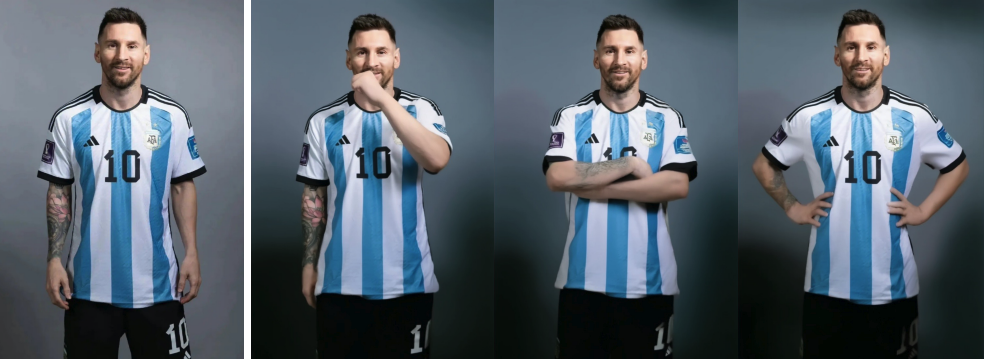Traditional hand-drawn animation is a classic form of 2D animation, where each frame is drawn by hand, while modern techniques often involve digital tools and software for more efficient production. 2D animation is achieved by displaying a series of individual frames in rapid succession, creating the illusion of motion.
Rooted in the simplicity of hand-drawn frames, 2D animation captures the essence of character and narrative with a timeless charm. During the early days of my career - I was fortunate to work with the visionary entrepreneur Rajiv Chilaka & Team at India’s Premier Animation Studio - Green Gold Animation to build India’s most popular animated character ever produced - Chhota Bheem.

Over the years, I have closely witnessed the complexities that involve in producing 2D animated content. As we can see in the following storyboard from Green Gold’s popular show - Chhota Bheem the level of detailing and complexity that exists in 2D animation. In an era of technological advancements, 2D animation stands as a testament, showcasing that sometimes, the most captivating tales are told through the strokes of a pen or the click of a mouse.

Over the years, animation, a captivating art form, has undergone a remarkable evolution, transitioning from humble hand-drawn 2D sketches to the sophisticated realm of 3D animation.
Now, fast forward to the present, where a groundbreaking paper titled "Animate Anyone: Consistent and Controllable Image-to-Video Synthesis for Character Animation" published by the research group at the Institute for Intelligent Computing, Alibaba Group is poised to redefine the animation narrative from the ground up.
This paper introduces an innovative framework for character animation, leveraging the prowess of diffusion models. The authors, pioneers in the field, ingeniously tackle challenges in consistency, controllability, and continuity. Their method, featuring ReferenceNet for detailed feature merging, an efficient pose guider, and a temporal modelling approach, outshines existing image-to-video synthesis techniques.
The significance of this paper extends beyond the technical intricacies. It addresses the core challenges in character animation by seamlessly integrating spatial attention, pose guidance, and temporal modelling. The implications of this research are profound, as it sets a new benchmark in fashion video and human dance synthesis, showcasing superior results compared to existing methods.

Immense Potential: The proposed technology in "Animate Anyone" holds immense potential for several reasons and they are listed as followed:
- Versatile Character Animation: The framework offers a novel approach to animating arbitrary characters, transcending limitations. This versatility opens doors for diverse applications across industries.
- Spatial Attention and Detail Integration: The introduction of ReferenceNet demonstrates a sophisticated method for merging detailed features through spatial attention. This ensures animations retain intricate character details, contributing to a more immersive visual experience.
- Efficient Pose Guidance: The incorporation of an efficient pose guider enhances controllability, a critical factor in character animation. This feature empowers creators to articulate character movements with precision, fostering a dynamic and engaging narrative.
- Temporal Modeling for Seamless Transitions: The temporal modeling approach ensures smooth inter-frame transitions, addressing the challenge of continuity in animated sequences. This results in lifelike animations with a natural flow, enhancing the overall quality of the visual storytelling.

As we traverse the evolution of animation, from the traditional hand drawn 2D animation to the cutting-edge synthesis of "Animate Anyone," we witness a transformative journey.
Messi - Static Reference Image to Animated Video - 2D to Image Synthesis
In conclusion, the "Animate Anyone" technology signifies a transformative leap in character animation. Its potential to revolutionize content creation is vast, offering businesses new avenues for creativity and engagement.
By strategically implementing and embracing this cutting-edge framework, businesses can stay at the forefront of animation innovation and deliver unparalleled visual experiences to their audiences.
What do you think of this emerging new Image to Video Synthesis technology? How are you making sure that your animation service is ahead of the competition? What changes are you making in your business to engage with this new trend? What would you like to achieve in your business? Please share your thoughts in the comments below. Thank you.
Reference:
- Animate Anyone: Consistent and Controllable Image-to-Video Synthesis for Character Animation, Institute for Intelligent Computing, Alibaba Group: https://humanaigc.github.io/animate-anyone/
- Research Paper: Animate Anyone - https://arxiv.org/pdf/2311.17117.pdf
- Chhota Bheem & Mighty Little Bheem - Green Gold Animation, India - https://www.greengold.tv

